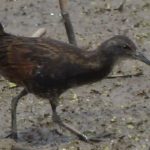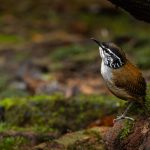This is neat and sad at the same time. Poor Bryan’s Shearwater.
Recent Posts
 Species Spotlight: Spotted OwletBy Kai Pflug
Species Spotlight: Spotted OwletBy Kai Pflug Book Review: The Merlin: The Ecology of a Magical Raptor by Frank RennieBy John Hague
Book Review: The Merlin: The Ecology of a Magical Raptor by Frank RennieBy John Hague Ornithological history and a confluence of eventsBy Catherine Carroll
Ornithological history and a confluence of eventsBy Catherine Carroll Demotivational Posters for Birds (III)By Kai Pflug
Demotivational Posters for Birds (III)By Kai Pflug 5 Wrens I’ve Met (So Far) on My Birding Adventures.By Fitzroy Rampersad
5 Wrens I’ve Met (So Far) on My Birding Adventures.By Fitzroy Rampersad Bird BrainsBy a Guest
Bird BrainsBy a Guest Don’t Bird and BikeBy a Guest
Don’t Bird and BikeBy a Guest
Posting Calendar
| DAY | WRITER(S) | SERIES |
|---|---|---|
| MON | Kai (w) | Birding Lodges (w) |
| TUE | Donna (m) Susan (m) Hannah (m) Fitzroy (m) Grace (m) | Bird Guides (w) |
| WED | Leslie (bw) Faraaz (bw) | Ask a Birder (w) |
| THU | Paul (w) Cathy (bw) | Birder’s Lists (w) |
| FRI | David (w) | Species Spotlight (w) |
| SAT | Peter (bw) Luca (bw) | From the Archives (w) |
| SUN | Clive (w) Sanjana (m) | Three Photos (w) |
| w weekly, bw biweekly, m monthly | ||
| Any time: Jason, Mark, John, Sara, Rolf, Dragan | ||
See here for info on the writers.
Newsletter
Signup and receive notice of new posts!
Thank you!
You have successfully joined our subscriber list.





This is sobering, but should we really be writing this species off yet? The sea is big, and it’s hard to see what we don’t know we should be looking for.
Headline: Most Likely Extinct
Actual Content: Possibly Extinct
Carrie is right, we should be trying to find where it breeds, not write it off. There is more than one species of petrel where we have little idea where they breed.
I agree that an effort should be made but I think that the bird is most likely extinct. Hopefully now that people know that it exist(s)(ed) they will keep an eye out for it.
I have just been reading The History of British Birds by DW Yalden and there is a brief note there of some discoveries of Medieval remains of Pterodroma species from Scottish sites that do not quite fit any of the most likely species like P.feae. Was there once other species in the north Atlantic? Even more, are they still there?